Check out Landscape Photography section of our forum.
Telescope lens?
May 19, 2014 20:56:18 #
I know I could probably search through the myriad of topics and find this, but please understand I am not that savvy on tech to do that with much success. That being said, here is my question to you...
I want to take some photos of nesting eagles and rock climbers from about 1/4 to 1/2 mile away. It is a daunting task but some shots I am willing to spend a bit of money doing. One of my options is a telescope lens. Do they do what they are advertised to do? Or would I best forget the notion and just get a massive regular lens for the shots? Please weigh in with any experience you have had including a yea or nay on the telescope with adapter. Thank you for your trouble in advance.
I want to take some photos of nesting eagles and rock climbers from about 1/4 to 1/2 mile away. It is a daunting task but some shots I am willing to spend a bit of money doing. One of my options is a telescope lens. Do they do what they are advertised to do? Or would I best forget the notion and just get a massive regular lens for the shots? Please weigh in with any experience you have had including a yea or nay on the telescope with adapter. Thank you for your trouble in advance.
May 19, 2014 21:09:39 #
Celestron & other companies make catadioptric telescopes. I think I have the term spelling. They are mirror lenses commonly used by amateur astronomers for shooting pictures of the moon, star trails, etc. You'd have to buy an adapter to mount your camera to it but, I don't see any reason you can't shoot what you're proposing with it. You'll also need a good sturdy tripod. Be aware that thermals & other atmospheric conditions may cause problems. What part of Piedmont, NC are you located in. I'm originally from Winston-Salem. Twenty-two years in the Air Force & retired for almost 26, I feel like I've lived every place except NC.
May 19, 2014 21:19:16 #
dlmorris
Loc: Loma Linda, Ca
Telescopes make wonderful camera lenses. BUT, it depends on the kind of telescope. Most of the mirror type scopes (mostly Newtonians) that you would find at such places as Walmart and the like, would require some modification in order to work with a camera. Nor do they work well in the daylight. Most reasonable refractors would work, though there may be some CA evident. The Schmit Cassagrains (Meade, and Celestron) work well out of the box, with proper camera adapters, though they are usually around F-10. Essentially they are high quality mirror lenses. If you have access to a telescope store, or someone with a telescope, they could give you some good advice....
Check out Infrared Photography section of our forum.
May 19, 2014 21:52:04 #
May 20, 2014 05:21:54 #
have a look at the skywatcher 125 mak cas , you dont need the goto,option
I used mine for years and only just sold it recently
I used mine for years and only just sold it recently
May 20, 2014 06:21:30 #
www.celestron.com%2Fc3%2Fsupport3%2Findex.php%3F_m%3Dknowledgebase%26_a%3Dviewarticle%26kbarticleid%3D2132%26group%3Diframe&title=How+do+I+connect+a+single-lens+reflex+%28SLR%29+camera+to+my+telescope%3F" rel="nofollow" target="_blank">http://www.celestron.com/support/knowledgebase?article=http%3A%2F%2Fwww.celestron.com%2Fc3%2Fsupport3%2Findex.php%3F_m%3Dknowledgebase%26_a%3Dviewarticle%26kbarticleid%3D2132%26group%3Diframe&title=How+do+I+connect+a+single-lens+reflex+%28SLR%29+camera+to+my+telescope%3F
But at 1/4-1/2 mile, image quality will never be a priority - atmospheric haze and heat waves will ensure that your image will be soft and distorted.
But at 1/4-1/2 mile, image quality will never be a priority - atmospheric haze and heat waves will ensure that your image will be soft and distorted.
May 20, 2014 11:24:20 #
In my opinion 1/4 to 1/2 a mile away is too far for a photo of a nesting eagle. As Gene51 stated your pictures will be soft and distorted. Even worse I think the subject of your photos will simply be too small to be seen clearly. I have photographed rock climbers that were probably 1/4 mile away up a climbing area with a 300mm lens and they could be cropped out to recognize the person and of course a lens such as the 150-600 would have been even better. That would work well I believe. But you should be able to quietly get closer to a nesting eagle than 1/4 mile away.
Good luck with whatever you buy,
Dennis
Good luck with whatever you buy,
Dennis
May 20, 2014 13:38:41 #
dlmorris
Loc: Loma Linda, Ca
Your best bet for a telescope would be the Orion 80ed, for around $4-500. The problem with any of the compact lenses (Schmit Cass or Mak) is that there is a secondary mirror reflecting the image back to the camera, but at the same time making the image softer. I'd save up for that Tamron 150-600, and yes, as others have pointed out, you'll never get a really sharp image at those distances anyway, due to atmospheric distort ions of some kind or the other....
May 22, 2014 08:17:15 #
All well noted. and I see some really good advice. One thing I want to add is the vantage point I have for this is my only draw back, otherwise I have a 4/3 Olympus E30 W/50-200 mm 2.8 with a 1.4 multiplier that gives me the equivalent of a 560mm film lens. I could get out my old stuff and go with a 500mm film lens w/2-2x multipliers that I have.... but it better be a bright day to use all that.
I will look into the non mirrored lenses think after hearing it all I will look into the Tamron 150-600. The rub will be finding an adapter for my Oly.
Feel free to chime in if you don't think I an going the right way.
I will look into the non mirrored lenses think after hearing it all I will look into the Tamron 150-600. The rub will be finding an adapter for my Oly.
Feel free to chime in if you don't think I an going the right way.
May 22, 2014 08:24:59 #
nicksr1125 wrote:
Celestron & other companies make catadioptric ... (show quote)
About 35 Nw of Charlotte. It's the higher elevations of the Piedmont to the foothills. As soon as I climb out of the local airport I can see the Blue Ridge Mountains.
Typical scrub for this area
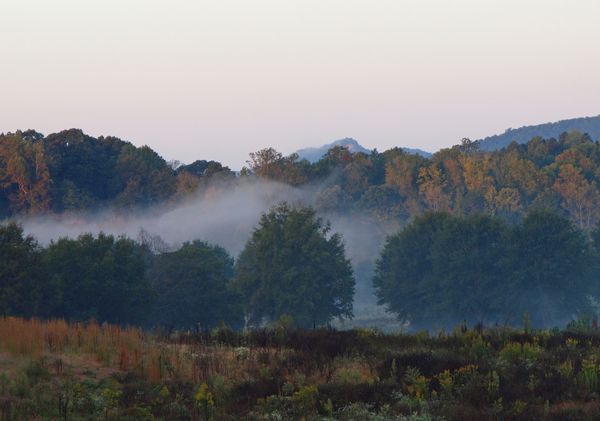
Naaa, I doctored the prices! It ain't that cheep in the south!
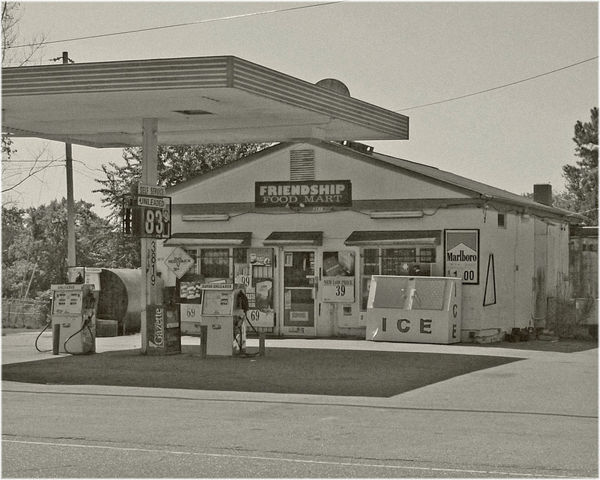
Nov 18, 2015 20:45:36 #
Update: I purchased both a telescope, and the Bigma 50-500 lens. Some luck and spring is coming eventually with a new hatchling.
Check out Commercial and Industrial Photography section of our forum.
Nov 19, 2015 00:15:45 #
Could you try some test shots of highway signs 1/4 mile to a 1/2 mile away and post them to this thread? I'd be curious to know what sort of results could be achieved from that distance with your lens vs. your telescope. I have a 4.75 inch refractor that looks like a bazooka on a 30lb. tripod mount and I don't believe I would get a very clear image at that distance.
Bob
Bob
capsar050 wrote:
Update: I purchased both a telescope, and the Bigma 50-500 lens. Some luck and spring is coming eventually with a new hatchling.
Nov 19, 2015 01:28:21 #
capsar050 wrote:
I know I could probably search through the myriad ... (show quote)
Not all telescopes will work well for this. I am including an image made with a very good refracting telescope, Explore Scientific ED102, of some buildings on a ridge line some 3.6 miles away (as verified using Wikimapia). This is with the sun to my back and on a day that is not so hot that I am getting thermal distortion which can really mess the image up.
This is about a 714mm focal length at f7 with a field flattener. And the camera was a full frame Sony A99 and was used in the prime focus configuration, meaning that there is no lens attached to the camera, and it is adapted to plug into the back of the telescope like an eyepiece would. This is the best way to do this.
The cheap refractors will not look very good. They don't use the special type of low dispersion objective lenses (because it is expensive) and are very susceptible to purple fringing (Chromatic Aberration), and also other types of distortion.
Some cheaper telescopes do not allow the focus adjustment to be adjusted in far enough to even obtain infinity focus with a camera in prime focus. This means that either the camera is adapted to sit on top of the eyepiece without a camera lens, or on top of the eyepiece with a camera lens. This is an eyepiece projection method and is much inferior to the prime configuration.
I don't want you to be disappointed. Unless the telescope is a fairly good one, the results won't be that good. You would probably have better results with a cheap, used, M42 manual focus camera lens. 300mm can be had rather cheap, and with the crop sensor, act like 450mm. There are 400mm and even 500mm lenses, but they will cost more. The el cheapo 800-1600mm zooms are much harder to get good results from due to poor construction and mediocre lenses.
Now, just to show that it can be done, I borrowed an 800-1600mm Vivitar, M42 type lens for the 2nd image. This house is in excess of 1.2 miles across open water. I had to edit the photo to cut through the haze. This also was done with the Sony A99 body. The lens had a lot of vibration and was exceedingly hard to get good focus. I used a remote shutter release and had to take steps to dampen the vibration in this lens. It was not very robust and had some wobble between the front of the lens and the back end in which the camera was attached. The image as taken was not so impressive, and with work, I got this. But you can see that I succeeded.
Good luck.
Explore Scientific ED102 (about 714mm) at 3.6 miles. You will notice it is sharper in the center than the edges.
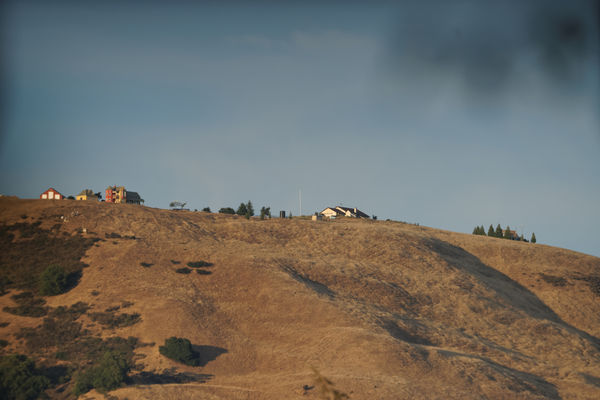
(Download)
800-1600mm @ 800, showing that it can be done, at about 1.2 miles over open water
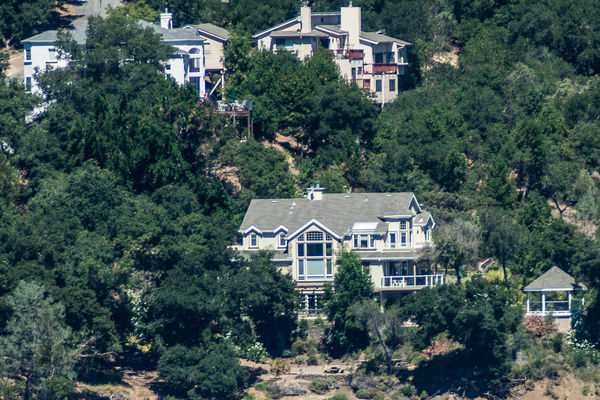
(Download)
For comparison, here is the Sony A6000 with the Tamron 150-600mm at 600mm (900mm equiv)
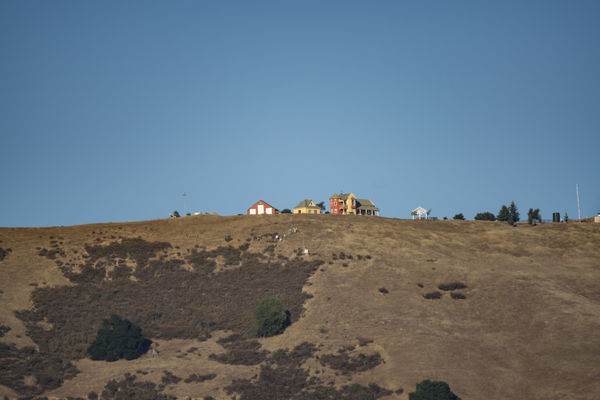
(Download)
And also A6000 with Tokina 300mm, f2.8 (450mm equiv)
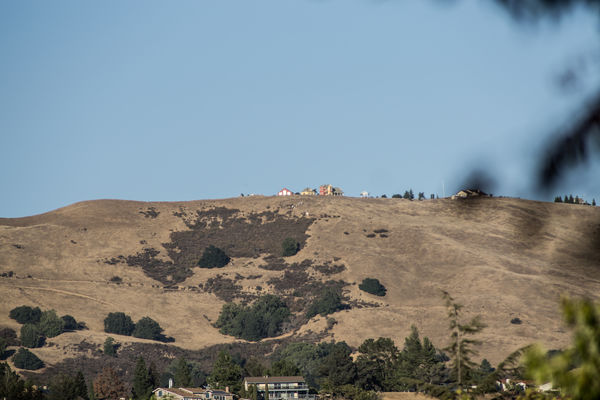
(Download)
Another comparison. Sony A99 with old Pentax 300mm f4, manual focus M42 lens (eBay for about $50)
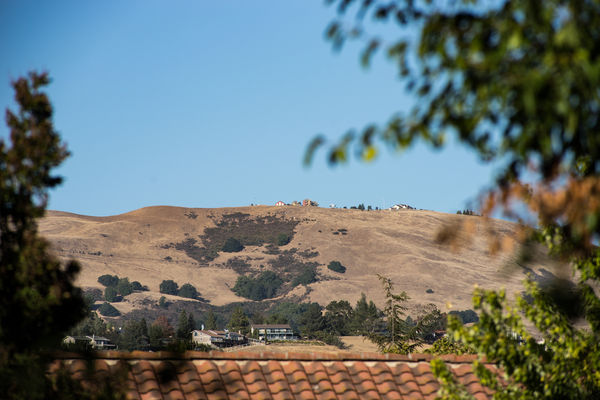
(Download)
Nov 19, 2015 12:34:27 #
rkeele
Loc: Puyallup, Wa.
Hi
For what it's worth, I use a Nikon spotting scope with adaptor on my Nikon D700. It works just fine.
For what it's worth, I use a Nikon spotting scope with adaptor on my Nikon D700. It works just fine.
Nov 19, 2015 13:42:06 #
rkeele wrote:
Hi
For what it's worth, I use a Nikon spotting scope with adaptor on my Nikon D700. It works just fine.
For what it's worth, I use a Nikon spotting scope with adaptor on my Nikon D700. It works just fine.
That Nikon Spotting scope is highly rated and is known to work well.
There are many cheapy scopes out there that will not match that performance.
If the telescope eyepiece has to remain in place, it is called "digiscoping". This is an inferior way to take images when compared to "prime focus" where the camera takes the place of the eyepiece. The Nikon scopes do use "ED" type glass which is very important and are known to produce nice results.
Some URLs that might be of interest:
https://www.astronomics.com/photography-spotting-scope_t.aspx
http://www.digitalcameraworld.com/2013/06/11/digiscoping-how-to-use-a-spotting-scope-with-your-camera-for-ultra-close-images/
If you want to reply, then register here. Registration is free and your account is created instantly, so you can post right away.
Check out Black and White Photography section of our forum.







